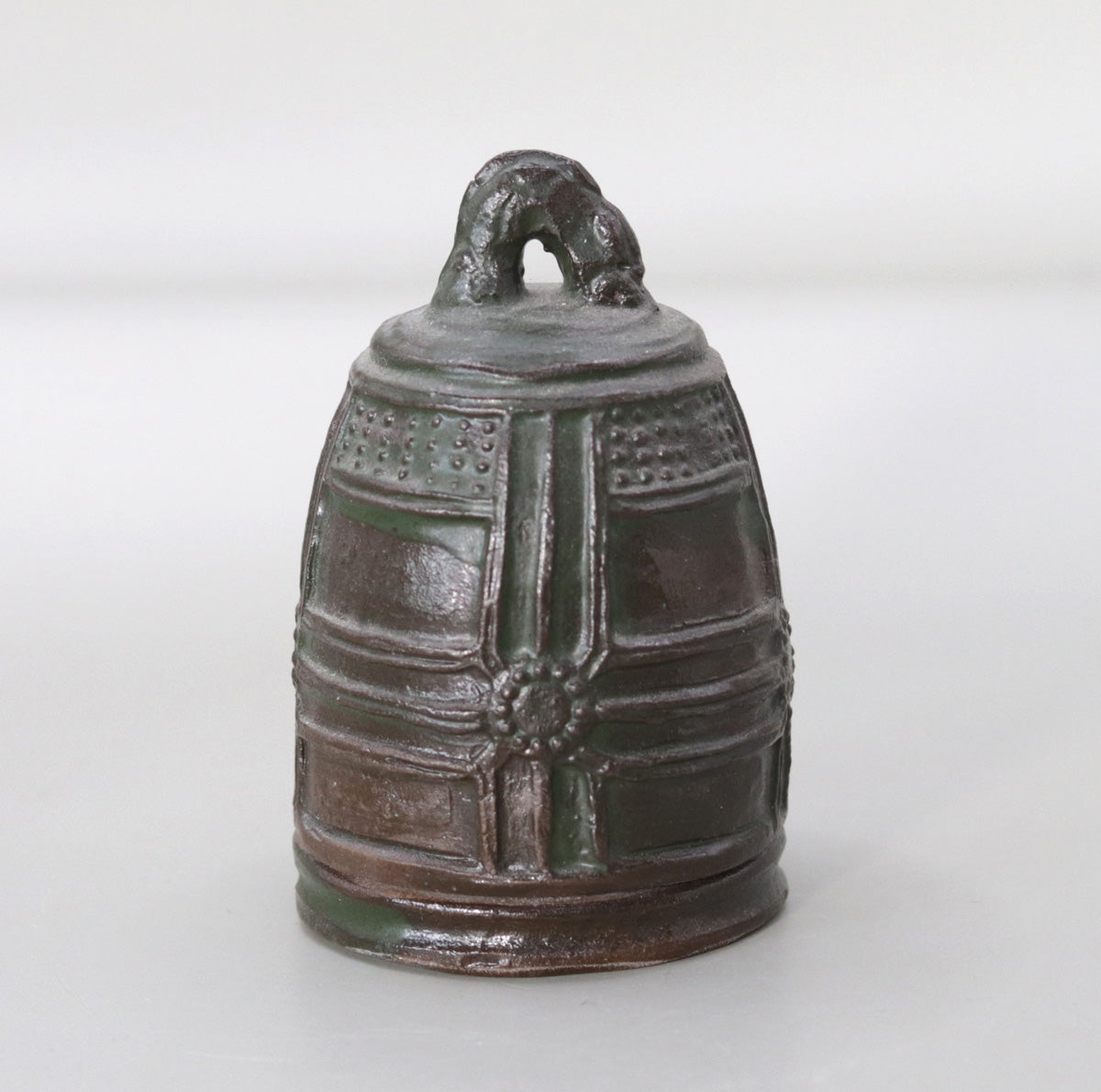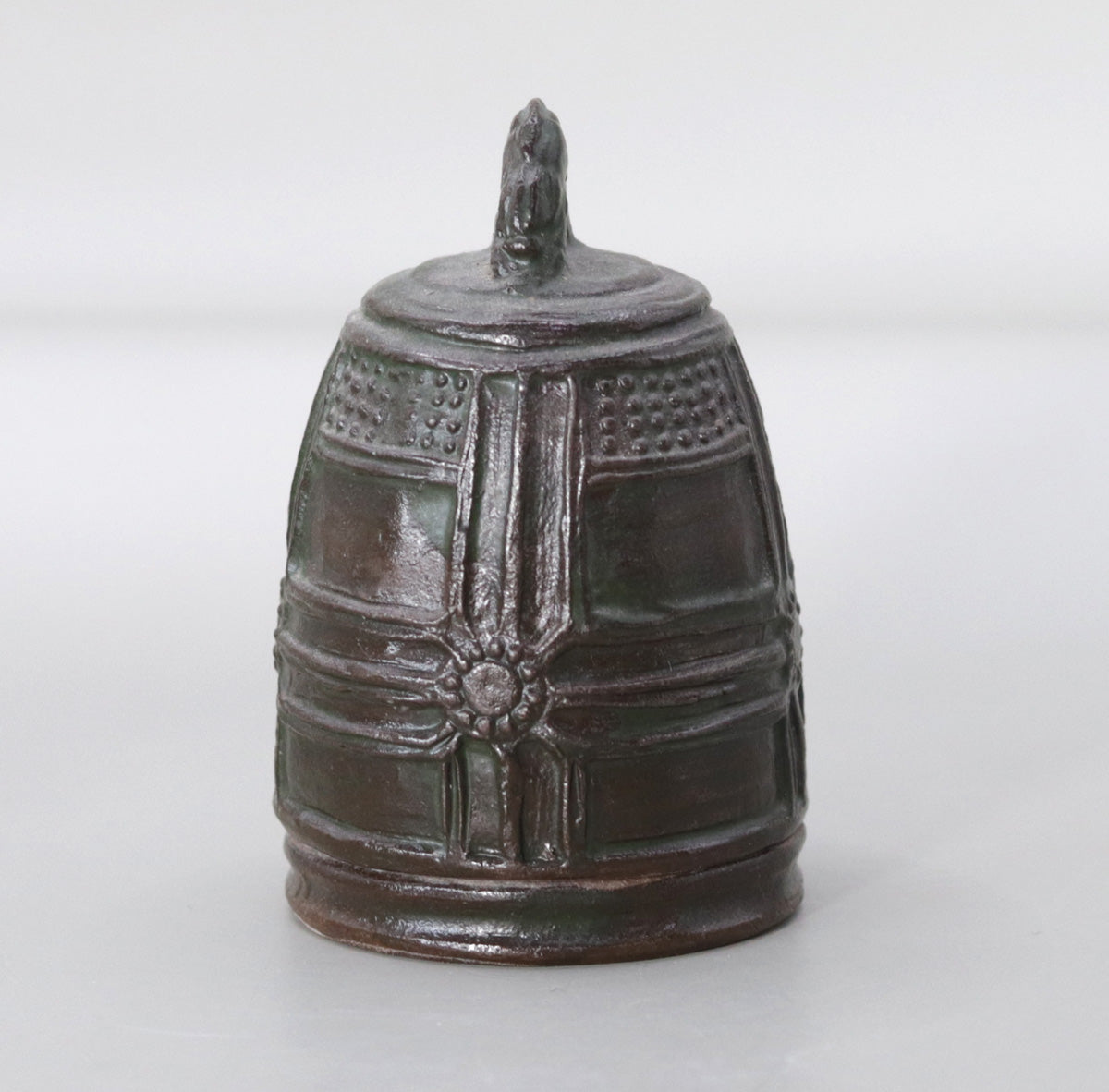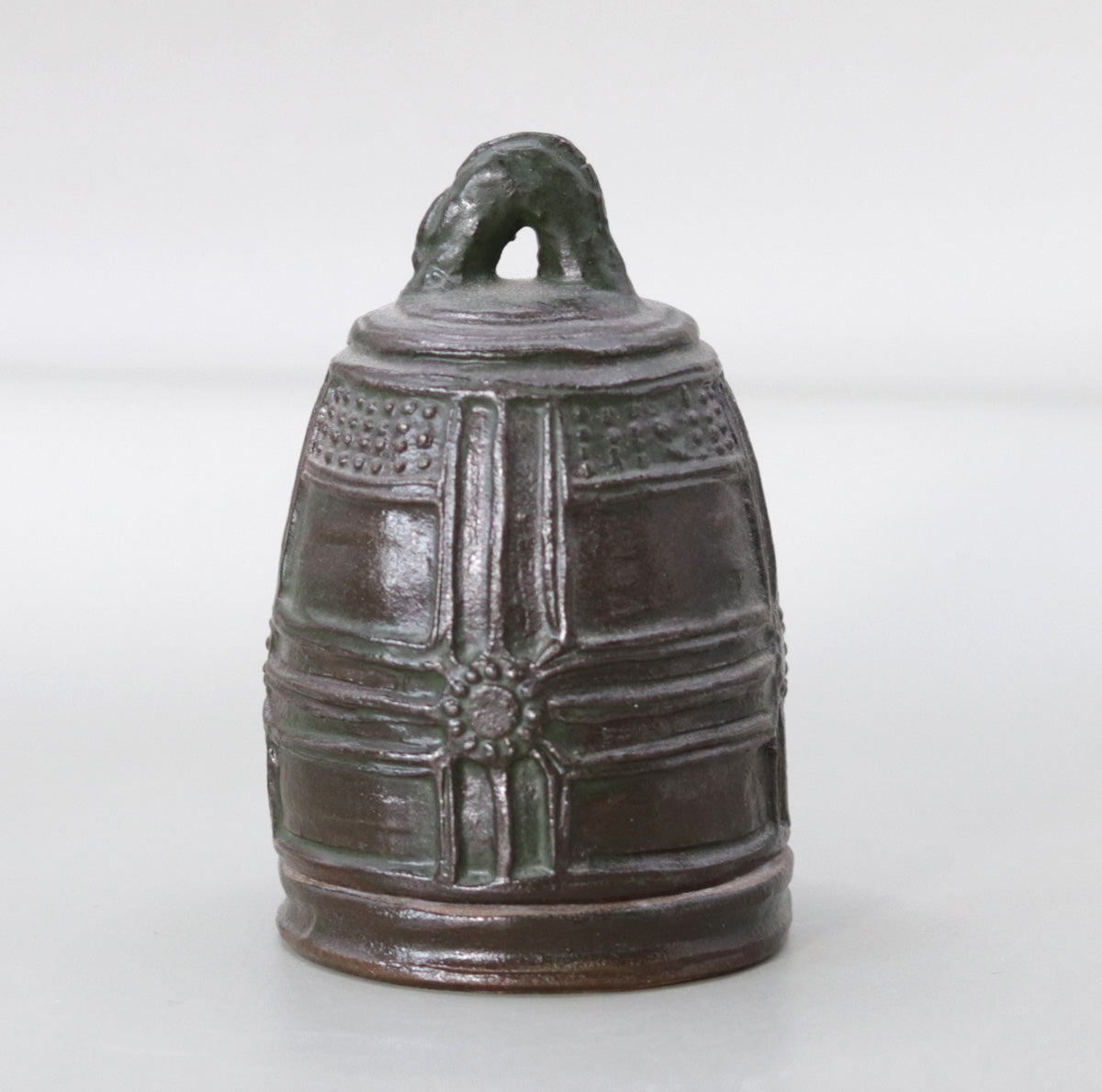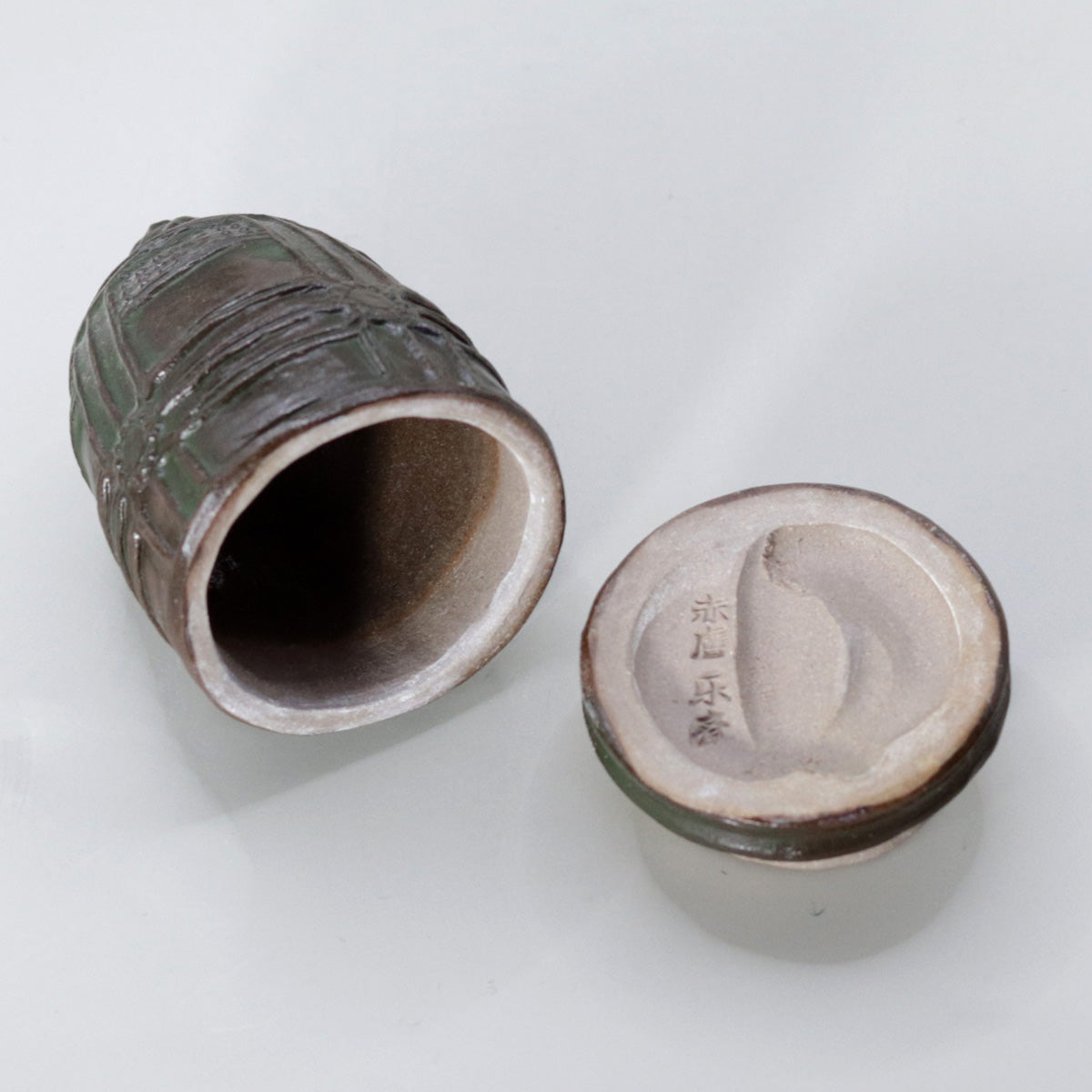Todaiji Temple temple bell incense holder by Bisai Rakusai
Todaiji Temple temple bell incense holder by Bisai Rakusai
Couldn't load pickup availability
Width: 5.0cm x 5.0cm Height: 8.0cm
Todaiji Temple temple bell incense holder (Todaiji temple bell incense holder) Made by Rakusai Onishi
--Bring the echoes of the Great Bell of Nara into the universe of your palms--
1. Work summary
This incense container was created by the master of Akahada ware from Nara, Onishi Rakusai, and is a small piece that replicates the Todaiji Temple bell, a national treasure, in the palm of your hand. It has a lid and is designed to hold incense paste or fragrant wood in the hollow part of the body, making it perfect for *nagori (a last vestige of a past life)/saibo (a year-end gift)* at a tea ceremony, or for New Year's Eve.
2. Highlights of the sculpture
| part | Correspondence with the actual temple bell | Unique ingenuity of incense holders |
|---|---|---|
| Crown | A simple abstraction of the handle with two intertwined dragons | The openings also serve as ventilation holes to allow the incense smoke to escape more easily. |
| Kesagake and Breasts | The four sides feature powerful ridges running crosswise and 98 breasts engraved on the stone. | The breasts are indicated with fine dots, while the material is smooth to the touch. |
| Tsukizu | The eight-leaf pattern shows the elegance of the Nara period | The center is slightly bulged, which helps make the lid easier to pick up. |
The entire piece is layered with black candy glaze and copper-green glaze , which simultaneously expresses the verdigris of bronze and the browning that occurs with age, and the slight kiln changes give it a luster and depth reminiscent of iron skin.
3. Techniques and the wonders of Akahada ware
Akahada ware originated in the early Edo period and developed by incorporating the elegance of Nara-e and Yamato-e paintings into tea ware. At Bisai Kiln, Akahada clay, which contains a lot of iron, is reduced and fired, which is characterized by achieving both the brightness of the iron glaze and the color of the pale green glaze. This work does not use a mold, but is shaped into a bell shape by hand twisting and beating the surface.
After drying, the nipples and kesakake are engraved with stamps and lines , then it is fired in a reducing flame to create a shaded relief, the iron in the black candy glaze takes on a metallic luster, and the copper-green glaze accumulates in places to give it a green-blue color.The skilled blending and firing of both the clay and glaze to achieve the texture of "terra metallica" reminiscent of metalwork is evident.
4. The historical significance of the Todaiji Temple bell
Casting year : Said to be 752 (4th year of Tenpyo Shoho), the same year as the Great Buddha's consecration.
Dimensions : It is huge, with a total height of 3.86 m, a diameter of 2.71 m, and a weight of 26.3 t, and is counted as one of the three most famous bells in Japan.
It is affectionately known as "Narataro," and the sound of the bell rung every evening at 8 o'clock resonates deeply, earning it the nickname "the energetic Todaiji Temple."
This history has passed down the spiritual culture of Nara to the present day - namely, the teachings of the Kegon Buddhist teachings and prayers for the protection of the nation - and by depicting them on incense containers, they bring a sense of solemnity and tranquility to the tea room.
5. Seasonal feel and combinations
| Tea ceremony season | Interest | Recommended incense | Example of a tool set |
|---|---|---|---|
| Year-end gifts | The quietness and lingering emotions of the end of the year | A faint hint of aloeswood and sunken incense | Scroll: Ryokan "When the bell strikes...", Flower: A branch of winter camellia, Kettle: Demon mask with a hook |
| New Year's Eve | A symbol of eliminating the 108 earthly desires | Burn a small amount of Borneolum to purify yourself with its clear scent. | On the shelf are incense bells and feather brooms, and sweets bearing the words "New Year's Eve Gold and Silver." |
| First day of spring | As a sign of the new year | Sandalwood-based incense paste | A silver kettle with hot water and wintersweet flowers |
6. Mr. Onishi Rakusai's ceramics philosophy
Based on his belief of "bringing the memories of Nara into the living room," Onishi Rakusai sublimated motifs (deer, lanterns, temple bells, etc.) that symbolize the historical sites, myths, and legends of the area into tea ware. His incense containers, which combine the warmth of hand-made products with sculptural forms, evoke the viewer's image of the "ancient capital in the palm of their hand," making them rare objects that are both aesthetically pleasing and practical.
7. Summary
This Todaiji Temple Temple Bell Incense Container is a masterpiece that captures the lingering sound of a bell that has continued for over a thousand years and the tranquil solemnity of Nara Buddhism in its tiny walls. The shadows created by the dark brown and verdigris-colored glazes become even deeper in the soft light of the tea room, and when you open the lid, you will be reminded of the distant sound of the bell from the Great Buddha Hall along with the incense smoke that wafts through the air. This is a small but powerful masterpiece that combines the seasonal almanac with the poetry of the tea ceremony.
A conversation with Rakusai Onishi – High-end pottery specialty store [Amagi-do]
Share

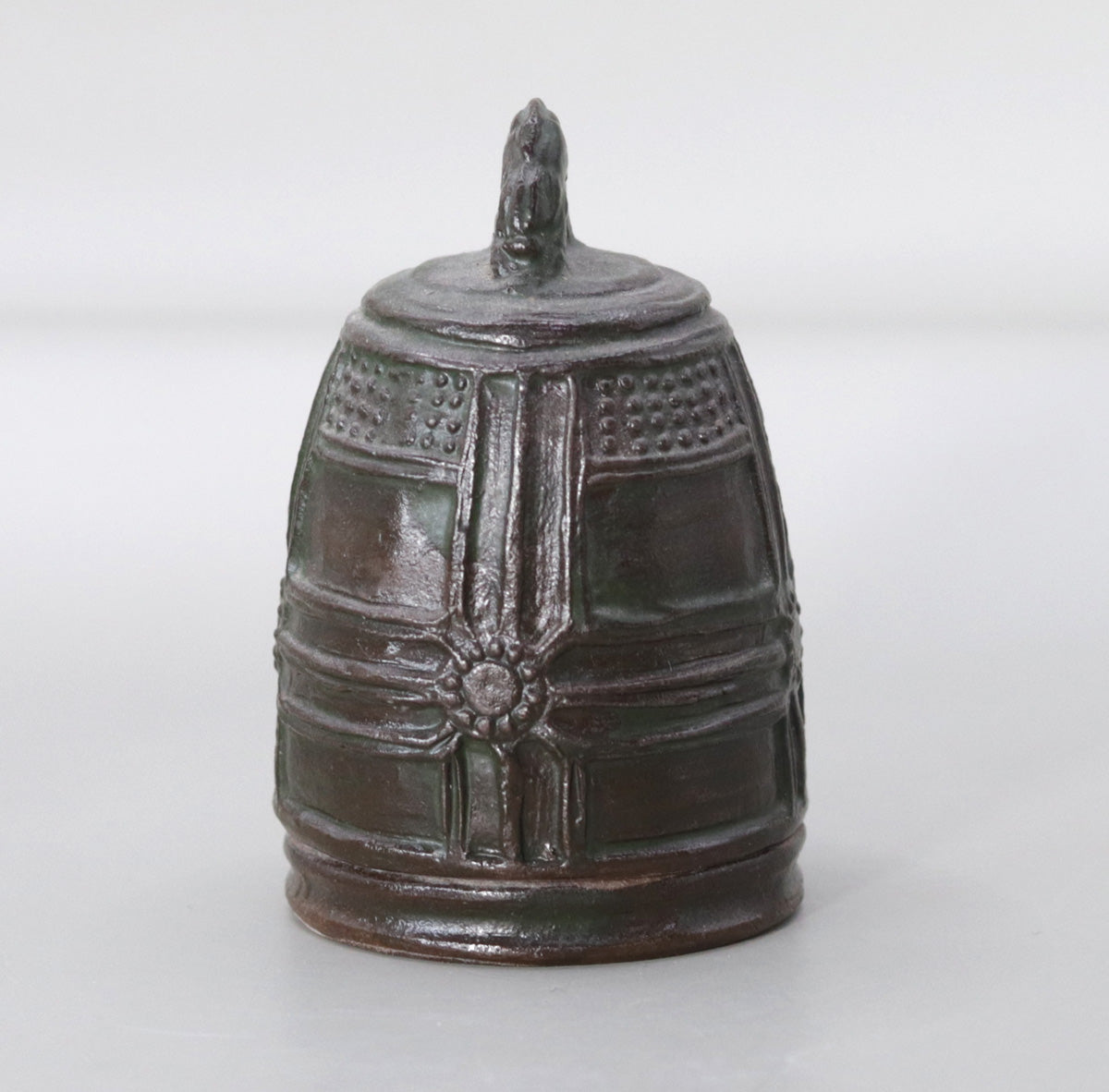
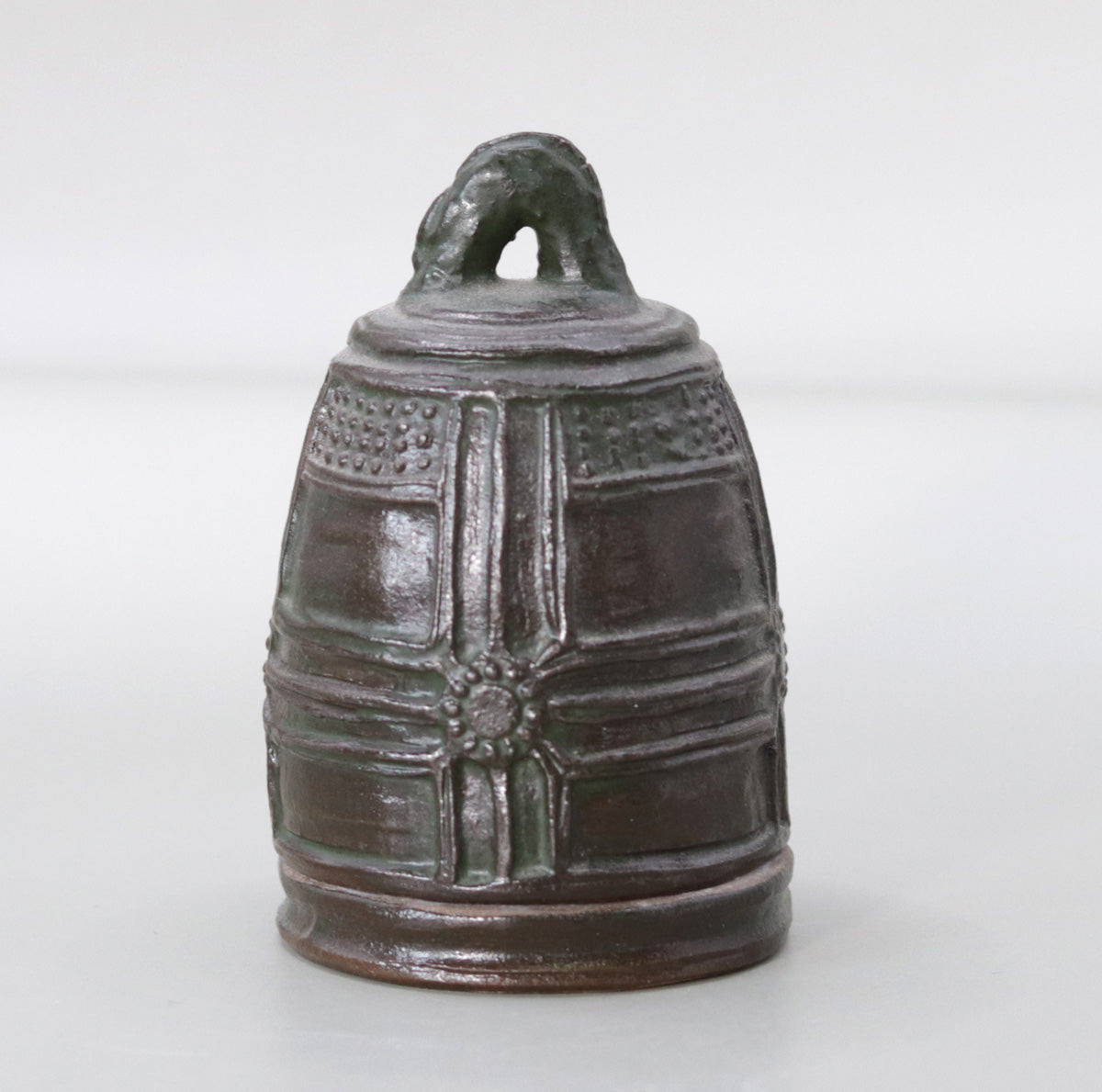
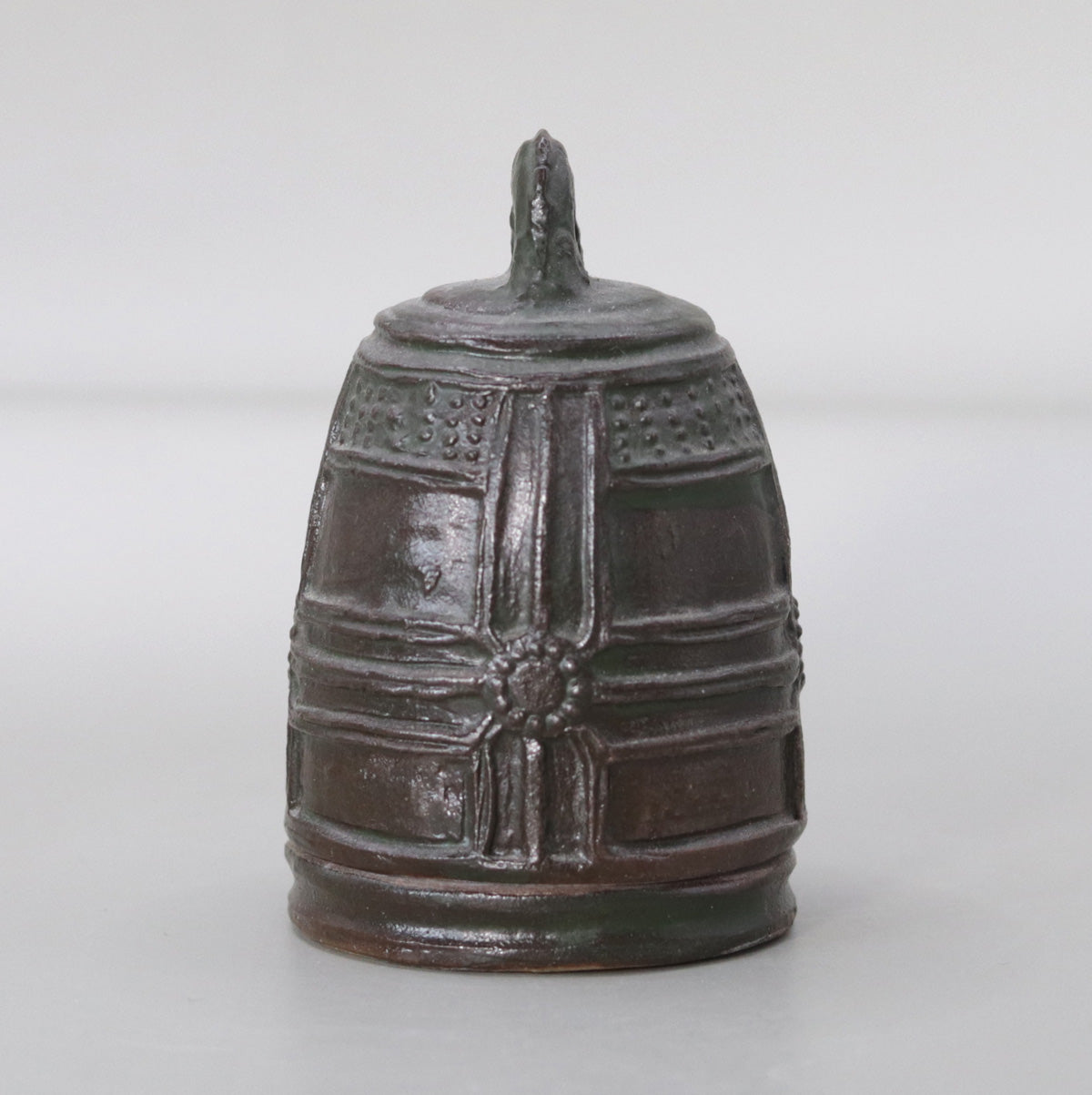

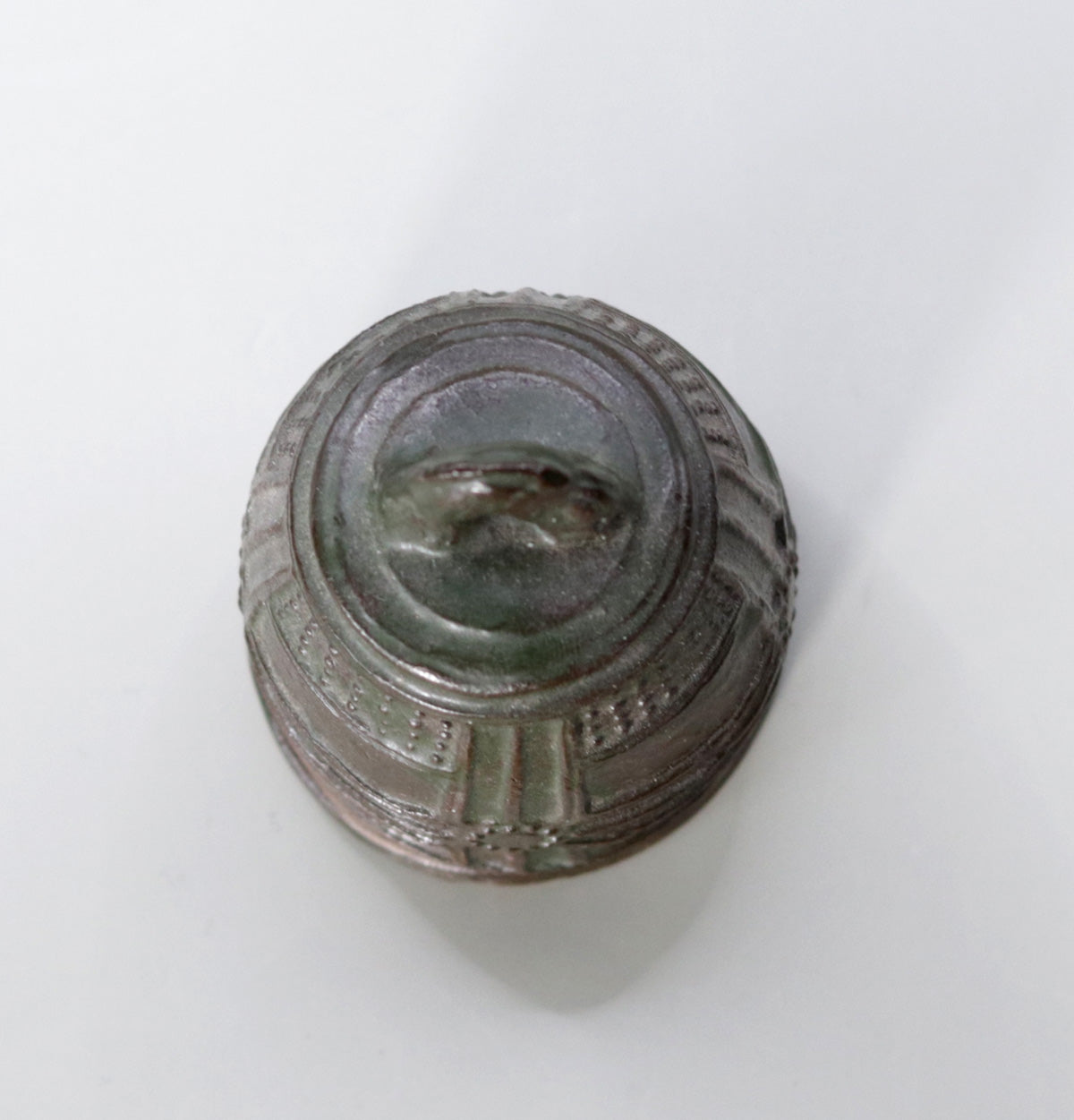
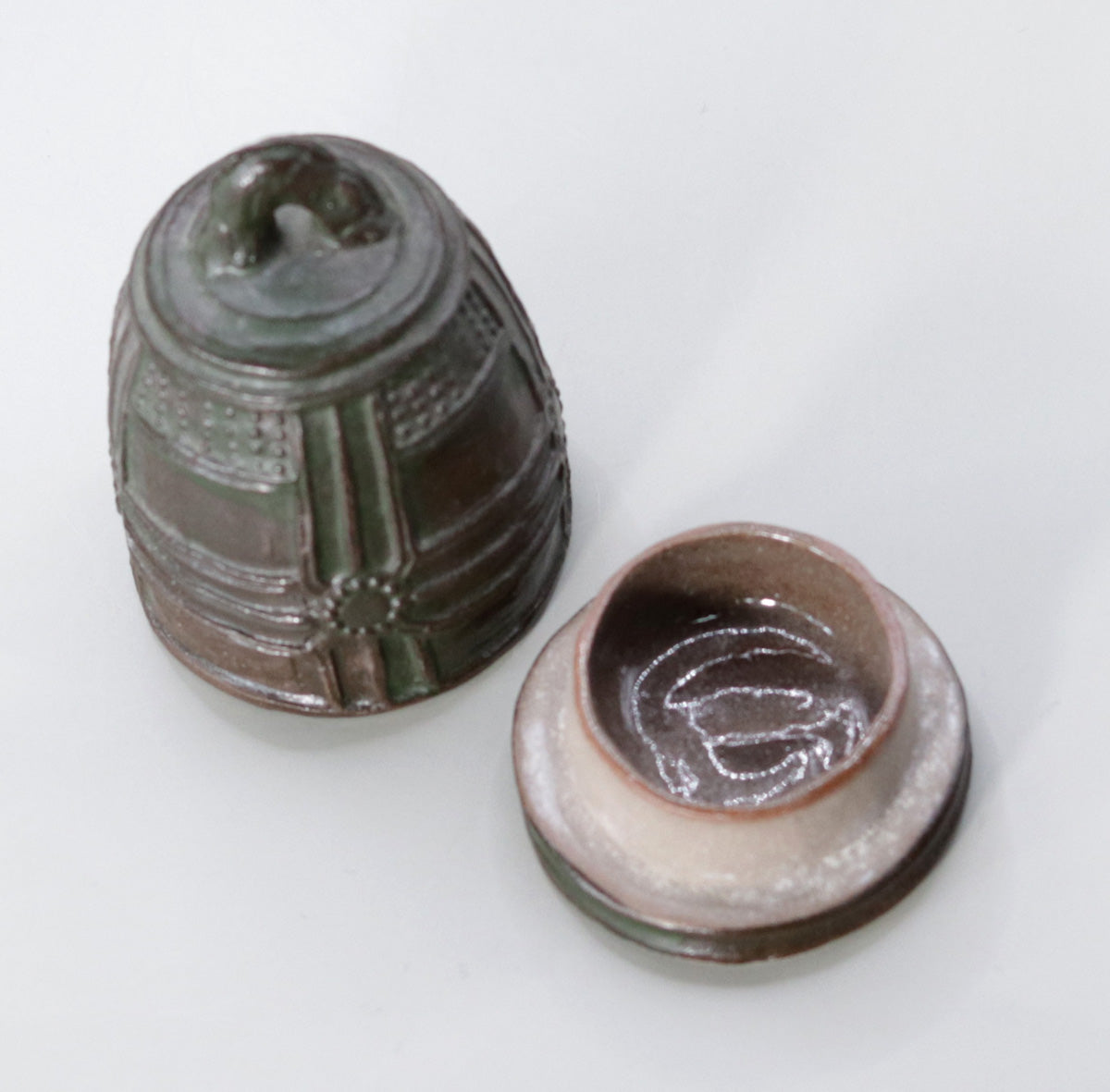
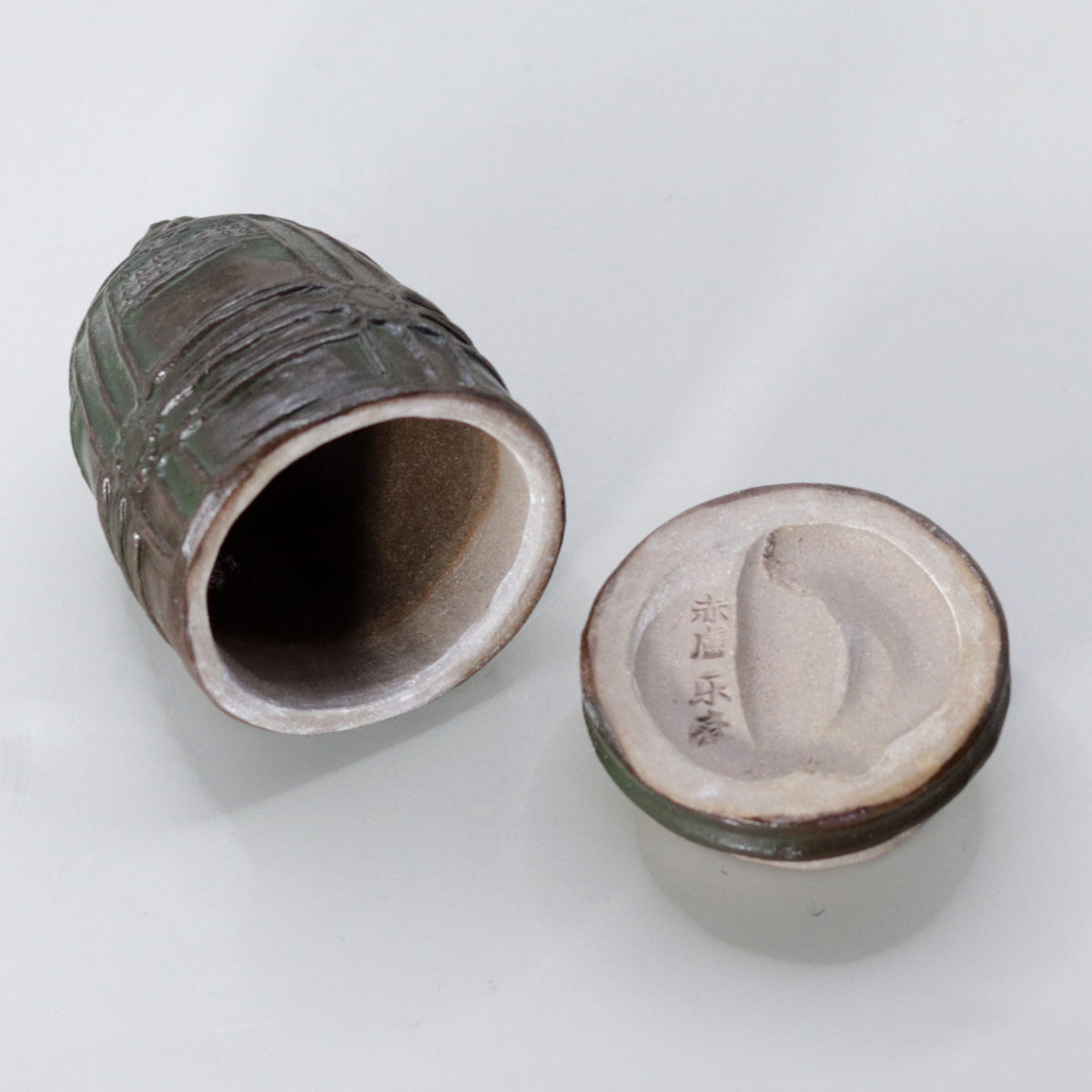
Multi-Column
-
[I will send it to you quickly and carefully]
We carefully package each product in a way that suits it best.
Also, delivery times vary depending on the piece (vessel, etc.).
Items that already come with a box will be shipped within 1-3 days of the order date.
For items that require a box to be made after your order, it will take approximately 30 days for production to be completed and then shipped.
In either case, once we have confirmed your order, we will contact you by email to inform you of the delivery date.
-
[Requests when purchasing pottery]
Even products that look the same may differ slightly in color, shape, size, etc.
The way the glaze is used, the power of the kiln, the firing method, the season, and the humidity also affect the appearance of the pottery.
Please understand the individuality of each piece of pottery and enjoy the unique warmth of handmade.

